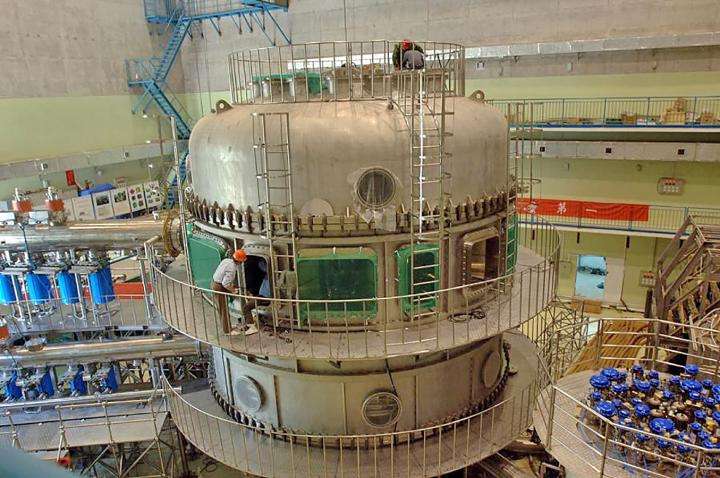US-China collaboration makes excellent start in optimizing lithium to control plasma

For fusion to generate substantial energy, the ultra-hot plasma that fuels fusion reactions must remain stable and kept from cooling. Researchers have recently shown lithium, a soft, silver-white metal, to be effective in both respects during path-setting U.S.-Chinese experiments on the Experimental Advanced Superconducting Tokamak (EAST) in Hefei, China. Leading the U.S. collaboration is the U.S. Department of Energy's (DOE) Princeton Plasma Physics Laboratory (PPPL), together with co-principal investigators Los Alamos and Oak Ridge National Laboratories, with Johns Hopkins University, the University of Illinois at Urbana-Champaign, the University of Tennessee-Knoxville, and the Massachusetts Institute of Technology. Scientists from General Atomics also participate via a separate grant.
Seven U.S. researchers traveled to EAST in December, 2016, to participate in the experiments. They deployed lithium in the Chinese tokamak in three different ways: through a lithium powder injector, a lithium granule injector, and a flowing liquid lithium limiter (FLiLi) that delivered the element in liquid form to the edge of EAST plasmas.
The research showed excellent progress in all three areas. The form of the experiments and their results included:
- The first use of the lithium powder injector in EAST discharges that exhausted hot plasma through the tokamak's tungsten divertor. The injected powder successfully eliminated periodic instabilities known as edge localized modes (ELMs) that could damage the divertor. The results compared well with the use of powdered lithium in the carbon divertor in previous EAST experiments, in previous National Spherical Torus Experiments (NSTX) research at PPPL, and in the DIII-D National Fusion Facility that General Atomics operates for the DOE in San Diego, indicating a basic compatibility between tungsten and lithium. Such compatibility will be needed for future power plant designs that consider tungsten to be the substrate for liquid lithium plasma-facing components.
- Use of the lithium granule injector showed that a threshold exists for the minimum size of the granules that are large enough to trigger ELMs—an alternative procedure that causes the instabilities to be smaller, more frequent and less detrimental to plasma-facing components. The observed threshold showed similarities to the minimum size of ELM-triggering granules in recent DIII-D experiments.
- Use of a second-generation FLiLi device sharply reduced the amount of deuterium at the edge of the plasma that recycled back into the core of the plasma and cooled it off during high-confinement experiments. Loss of heat caused by recycling can halt fusion reactions. The FLiLi device was inserted at the outer midplane of the EAST device. Fast-camera images of EAST experiments, performed with and without limiter insertion, showed potentially damaging lithium recycling without the limiter, compared with neutral and ionized lithium with the limiter in place. In addition, researchers observed for the first time several improved phases of energy confinement with the use of FLiLi.
Provided by Princeton Plasma Physics Laboratory





















